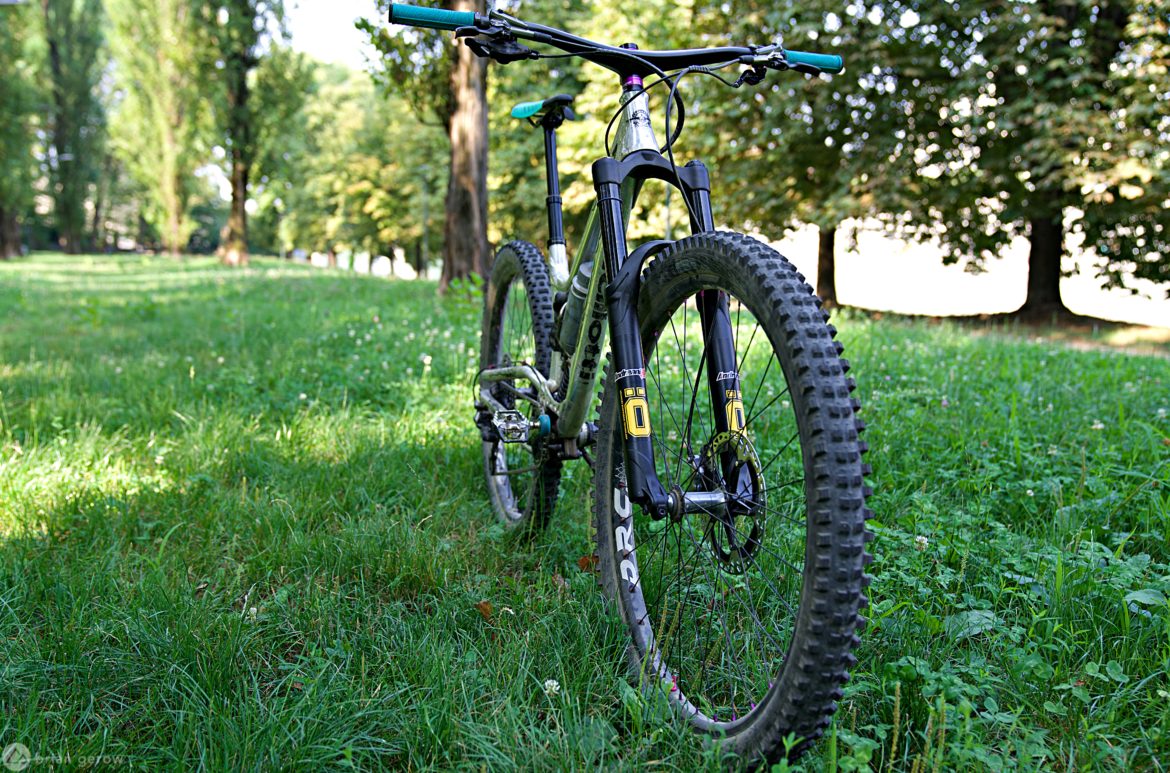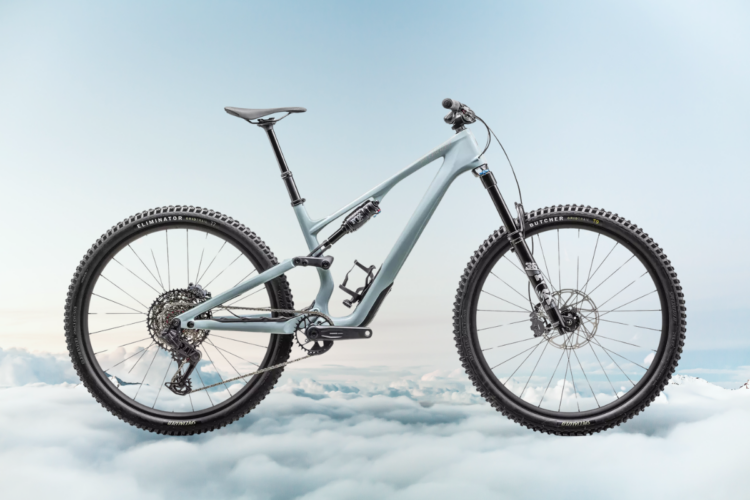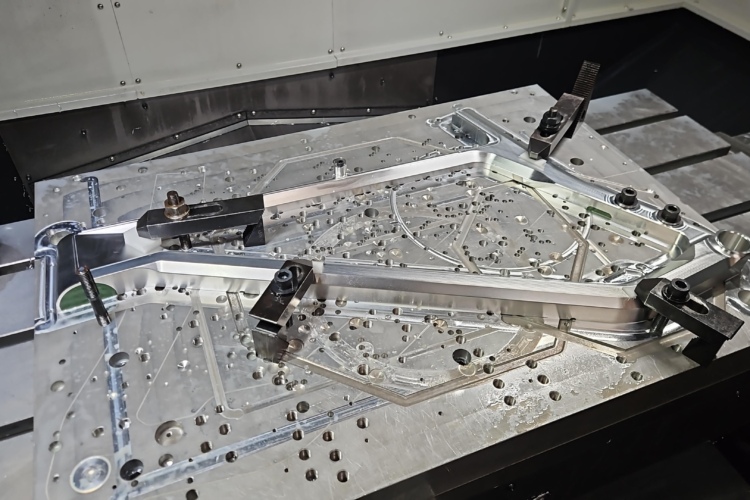
Mountain bike suspension companies have heaps of worthy competition these days that has encouraged meaningful technological advancements. It’s no longer a game of “the big two” trying to outdo one another. Every brand has to sort out how to design a fork that flows like water through the first bit of its travel to provide traction and ease trail chatter, then provides a supportive feel through the middle of its length and doesn’t become bogged down by successive impacts, and finally ramps up with enough pressure in the end to avoid the dreaded pang of a harsh bottom out. That’s a tall order.
I spent the better part of this summer with the Öhlins RXF 36 Evo Air Fork beneath my bars, and I am delighted to report that the fork meets all of the above expectations — after some patient tuning. The test fork suits my enduro race bike well, at 160mm of travel above a 29″ wheel.
Chasis features

The boost through-axle on the RXF 36 uses a two-part retention system, similar to some downhill skewers. First, tighten the main axle bolt to 6nm with a 5mm hex key, then pinch it in place with the other 5mm hex bolt at 6nm.


The RXF’s burly bridge is threaded to mount a fender. The bridge sits fairly close my 29×2.5″ WTB Verdict tire and suffered some sizable rock scrapes. The new Trail version is said to have far more tire clearance.
With the same stanchion diameter as the Fox Float 36 that was on this bike previously, the RXF 36 Evo is plenty stiff. In terms of lateral stiffness, and its ability to direct the front wheel where the rider wants it to go, the fork is handily on par with Fox’s Float 36.

Tuning and shredding

Check out our recent fork tuning guide for a full rundown on how to set up the RXF 36. In addition to the points outlined in that article, I will add that the air settings stuck to the back of the rider’s-right fork leg were almost exactly 10psi too low for my body weight and riding style. The graph recommends that a rider who weighs 60-70 kilos should pump the main chamber to 90-100psi, and the ramp-up chamber to 170-180psi. I weigh 69 kilos, and the fork feels best with 110psi in the main chamber and 190 in the ramp-up chamber.
It took several awkward-feeling rides to sort out the proper balance between the main chamber and the ramp-up, but with the tune dialed this fork is performing spectacularly. Once I found the proper main chamber pressure that keeps the fork high in its travel and well supported through the midstroke I was able to fiddle with the ramp-up chamber by inflating one stroke of a shock pump, or removing 2-3 psi until it felt dialed.
The ramp-up air chamber allows the rider to adjust the amount of pressure required to compress the fork through the final portion of its travel, and adding a very small amount of pressure can also soften up the first part of the travel. This adjustability took longer than a lot of other forks to tune, but the performance gain was worth that extra effort.
I rode with the high-speed compression switch one click from fully open on most tracks, and the low speed 2-4 clicks from fully open depending on the terrain. For steeper climbs where I needed to stand and pedal, I flicked the HS compression adjuster closed and was impressed with how rigid the fork feels when “locked out.” These settings feel good for all around riding, and the fork is easy to adjust for steeper and gnarlier slopes.

In order to achieve the bounding capability I enjoy from a fork I had to run the redound fairly fast, with 11 clicks out of 15 toward the rabbit. I could have achieved a similar feeling by adding air, but once the air chambers were dialed I decided to keep the fork feeling plush and simply sped up the rebound to add playfulness.
Now on to some overused suspension adjectives, like supple, plush, support, and ramp-up. The most striking advantage of the RXF 36 fork is the ability to precisely adjust the feel of its stroke throughout the travel, without messing with volume spacers. It’s a tinkerer’s delight. If you want the fork to feel synthetically smooth through the first bit of travel, you can have exactly that by simply adding a tiny amount of air to the ramp-up chamber. Alternatively, if you are out for a day in the bike park and want the fork to absorb some larger landings, add 5psi to the top and bottom air chambers to achieve the feel you are accustomed to, with more bottom-out control.
The mid-section of the RFX 36’s travel is well composed and feels every bit as supportive as other long-travel forks I have tested. The transition between the traction-grabbing beginning and the trail-hopping support below it is unnoticeable, and the fork will stay relatively high in its travel with the proper setup.
At the bottom end of the travel, The RXF 36 is about as tunable as they come. With 190psi in the ramp-up chamber, I wasn’t able to bottom out the fork. At the end of each ride, there was between one and two centimeters of travel remaining, which is exactly the cushion I aim for. I don’t huck the tallest jumps, and I am not a heavy person, so bottoming out forks is not something I am too concerned with. However, it has been good to know that this fork had my back in a few emergency situations.
Lastly, the finish on the RXF 36 stanchions and chassis is there to stay. I had one of the nastiest and most catastrophic crashes of my life with this fork, and it bears no sign of that tumble. Apart from the bridge scuffs made by rocks that were lodged in my tread, the fork looks and functions like new. It is likely due for an oil change, but you wouldn’t know it by the ride feel.

Final thought
While the Öhlins RXF 36 Evo is highly adjustable, it can also work well for the “set it and forget it” crowd, provided they are willing to do the initial work. If riders are not well versed in suspension settings it’s a good idea to try the settings recommended by Öhlins first, and adjust to terrain and styles from there. For folks who truly don’t want to tune their forks more than once, Öhlins also offers a coil version of their new m.2 Trail fork. This is a capable and well-designed piece of suspension that most anyone can dial in to their liking. The RFX retails for €790/$1,150 and it’s well worth that cash.
Thanks to the folks at Andreani Group for loaning us this fork to test.
⭐️ Find the Ohlins RXF36 online at Jenson USA and other online retailers.










0 Comments